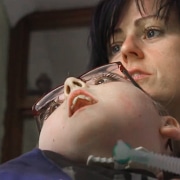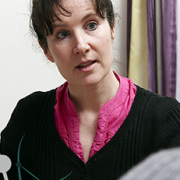Genome editing trial suggests cure for blood diseases
Recent tests have established a potential curative treatment for sickle cell disease and beta thalassaemia by using genome editing on bone marrow stem cells
Three patients with haemoglobin disorders – two with beta thalassaemia, and one with sickle cell disease – now appear to be healthy after genome editing was used on their bone marrow stem cells in a recent trial. This is the first scientific report of patients with a human genetic disease being treated successfully with the CRISPR gene editing technique.
Results were presented at the European Haematology Association Annual Congress and detail a positive outcome in all three affected individuals after a considerable post-treatment tracking period.
Sickle cell disease and beta thalassaemia explained
Sickle cell disease and beta thalassaemia are both inherited blood conditions caused by mutations in one of the genes for haemoglobin, the protein that carries oxygen around the body inside red blood cells.
People with beta thalassaemia make insufficient levels of haemoglobin, so not enough oxygen is carried from the lungs to parts of the body where it is needed. The severity can vary depending on the exact mutation, but severely affected individuals require regular blood transfusions.
In sickle cell disease, the haemoglobin protein forms an alternative three-dimensional structure which can cause the red blood cells to take on a rigid, sickle-like shape. As well as not transporting oxygen as efficiently as normal haemoglobin, the sickle-shaped cells are more likely to cause blockages in the blood vessels.
In both diseases, the only currently known cure is a bone marrow transplant. However, there are significant risks attached to the procedure, including graft versus host disease, which can be life-threatening.
Genome editing bone marrow
A minority of people who have two copies of the variant that causes beta thalassaemia never develop symptoms, and it turns out that these individuals continue to produce fetal haemoglobin, which stops being produced soon after birth in most people. Because fetal haemoglobin is made by a different combination of genes than adult haemoglobin, the mutations that cause beta thalassaemia and sickle cell are not present.
Unlike previous gene therapies which tried to insert a working copy of the into stem cells, this treatment aims to disrupt a control gene that ‘turns off’ fetal haemoglobin production in the bone marrow, so that it can be produced in adults.
To do this, the stem cells are collected and CRISPR genome editing is used to disable the control gene. The patient’s existing bone marrow is ablated by chemotherapy, as in a normal bone marrow transplant, and then the edited stem cells are replaced. New blood cells produced from the edited stem cells will then have the fetal haemoglobin.
A curative treatment?
Following the trial, post-treatment tracking of all three patients has returned extremely positive results.
The two patients affected by beta thalassaemia have been tracked for 5 and 15 months respectively, and both now have normal haemoglobin levels, the vast majority of which is fetal haemoglobin. In addition, now, neither require transfusions; one patient had undergone 33 transfusions in the 24 months preceding treatment.
The patient affected by sickle cell disease has been tracked for nine months and has almost normal haemoglobin levels, 46% of which is fetal haemoglobin. Prior to treatment, this patient experienced seven vaso-occlusive crises per year on average, and has had no recurrence of these since.
The treatment is designed to be a one-time curative intervention (in the same way that a bone-marrow transplant from a donor would be), so it is hoped that these results will be lifelong. Further observation will be required, however, before that can be stated with certainty.
Refining the approach
All three patients suffered significant side effects, although it is not thought that these were a result of genome editing; ablative chemotherapy destroys the immune system and can permanently damage some tissues, resulting in problems such as infertility.
The researchers are trying to find gentler ways to prepare patients’ bodies to accept the new cells, but, even in its current form, the treatment is likely to be lower risk than a bone marrow transplant from a donor, as the patient’s own cells are used, reducing the risk of graft versus host disease.
–
Please note: This article is for informational or educational purposes, and does not substitute professional medical advice.









